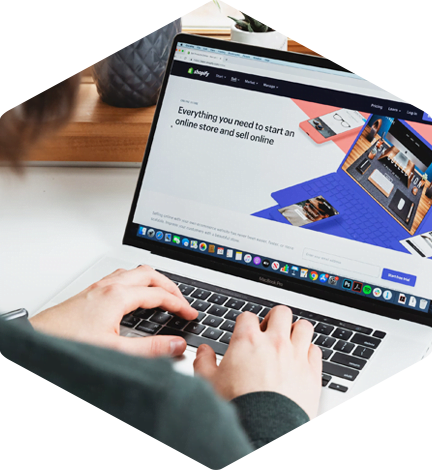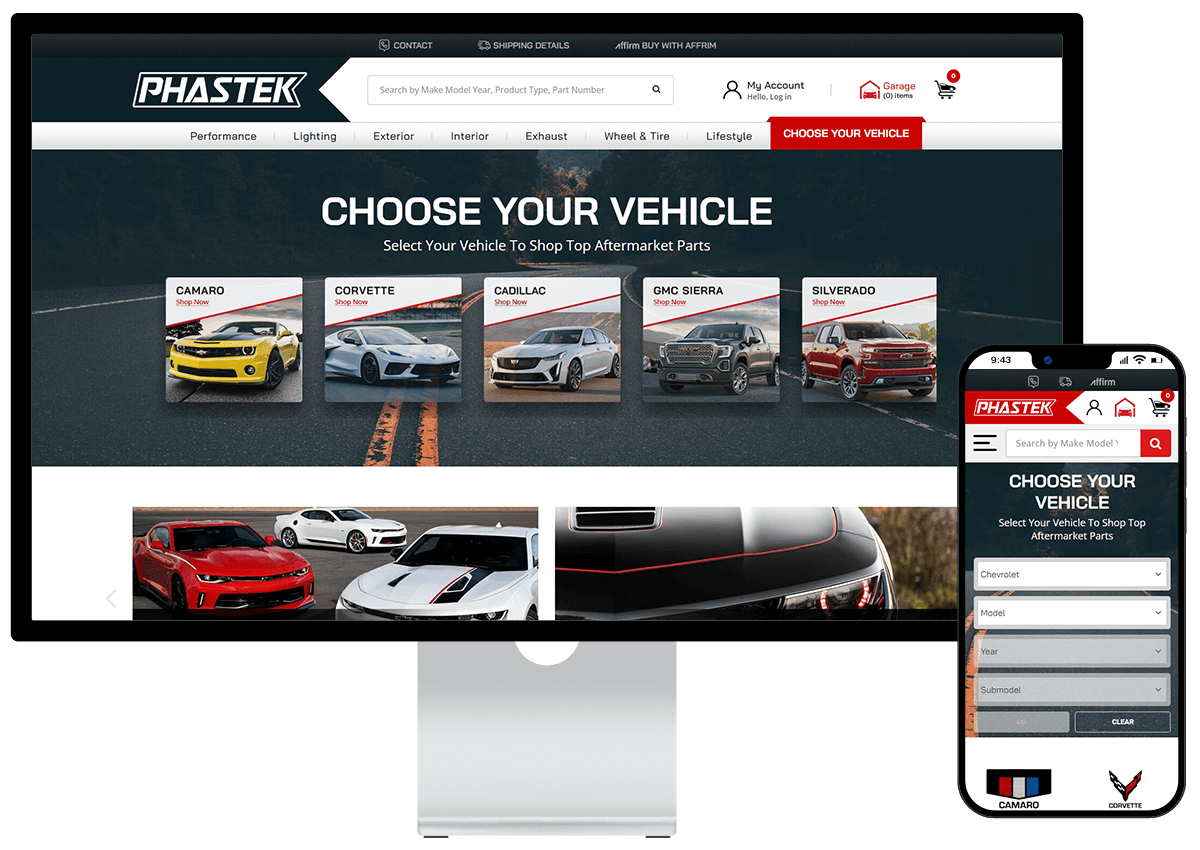

If you notice that your current eCommerce platform is limiting your business operations or business growth in any way, then it is time for you to start considering an eCommerce migration. So many eCommerce challenges can be fixed by migrating and getting new developments and updates. Depending on the eCommerce platform you use, some features and structures can either limit or enhance your store's functionality. If you find that your current platform does not provide you with functionality that will give your customers smooth experience and meet their demands, then that is your reminder to migrate to a better platform.
ECommerce replatforming and data migration are part of the challenging aspects of running an online business for many eCommerce entrepreneurs. This is because online business owners must factor in the possible risks and the effects eCommerce migration can have their business performance. It is a hidden secret that migrations tend to affect SEO and user experience, and if not executed well can also result in the loss of your eCommerce data, including customer data and accounts.
MAK Digital Design has executed over 300 successful platform and data migrations — our client reviews attest to that. Whether you need to migrate from an open-source platform such as Wordpress, or an eCommerce platform such as Magento, Shopify, or Volusion, to a full-service enterprise platform such as BigCommerce, Shopify Plus, or Magento Enterprise, we will work with you and use our tested and proven full-proof procedure to deliver eCommerce migration solutions that will elevate your business.
Don't Give Just Anyone Access to Your Data
Trust the Experts
There comes a time when a brand realizes that it needs a platform migration. Usually, when a brand gets more traffic or when there is an increase in customer data, the brand's website experiences technical issues. Hence, you might notice that your website is outdated, slow, or your website functions are generally poor. Whatever the technical problem is, you should migrate before it is too late. To conduct a platform migration, you need to find the right professionals to help you successfully move your files, customer, and product data, and other documents to your new eCommerce platform. MAK Digital Design is right for you. We have helped over 300 eCommerce brands in numerous niches migrate from their old platforms that no longer serve them to a better one that enhances their operations. We partner with big names such as Magento, Shopify Plus, Volusion, BigCommerce, and others.
We will help you with a successful migration.
The process of transferring data from an eCommerce site to another must be thorough, accurate and meticulous. Data migration includes the transfer of the following data: customer and order history, cloud storage, SEO data, third party APIs and workflows, product images and attributes, and other important data. Since you're here, that means you're considering data migration possibly because your brand is growing, and your website needs to be technically fortified and optimized to handle the growth. It is important to take data migration seriously, as you can risk losing your website data if you do not plan and execute your data migration well.
At MAK Digital Design we provide meticulous data migration services. First, we will export the data; on-page content, blogs, reviews, and more. Then, we will carefully restructure and assess the data to remove duplicate, obsolete, or incorrect data. Lastly, we will import the structured data into the new target system, and then conduct testing to make sure that the URL structure, 301 redirects, and general data integration on your new eCommerce websites is accurate. We do these meticulous procedures to ensure optimal performance on your new eCommerce website.
Article on Redirecting Images when Migrating or Redesigning a site.
Website migration is different from platform migration and data migration because you are not merely moving your website files and data from one platform to another; website migration is more than that. Website migration often includes changing domain names, changing URLs, switching from HTTP to HTTPS, merging websites, optimizing the website architecture and/or the URL structure, and more. Poor website migration can cause significant loss of data and operational system problems that can cause your website ranking to drop, which is why you must prevent poor migration by hiring experts to help with your website migration. MAK Digital Design helps with every step of website migration from start to finish; planning, prepping, testing, and finally launching. Then we follow up with assessing and fixing any possible bugs or failures that can pop up after the migration. MAK Digital Design has worked on several website migrations, and we guarantee complete success by following our full-proof success plan that attends to all the phases of website migration.
Something you need to know about data migration is that it does not matter how many migrations you have done, there will always be an unexpected issue when migrating from one platform to another. Every data system is unique, and therefore will always exhibit some type of unforeseen issue such as duplicate products or a new naming scheme. One of the benefits of hiring an agency with migration expertise is that the agency, given its years of experience, can detect an issue before it becomes drastic. Instead of hiring a migration service company that will dump your data into your new platform without inspecting the data for issues, leaving you to out to dry when sudden operational failures and bugs arise, go with the experts, go with MAK Digital Design.
At MAK Digital Design, our developers manually set the migration scripts, we inspect your data and will inform you of any configuration issue before we fix it. This way, when we move your data into your new platform, you get all your data and well-organized.
We Will Make Sure Nothing Gets Left Behind
Click any of the platform logos below to be directed to our platform specific pages!
The differences between different eCommerce platforms also tends to affect data migration such that data will not perfectly align with your new platform as it was in your old platform. But it will not matter if you hire professionals such as MAK Digital Design. We will help you mitigate the changes by renaming some values or creating custom fields to provide a new base in your new platform for your data. We will make sure that your data stays accessible and familiar in your new system.
If you notice that your current platform no longer provides the necessary support and functionalities your eCommerce business needs, then it is time to find an alternative.
An eCommerce platform migration might solve some of the issues your current platform is causing, however, migrations pose a risk of data loss and data security problems. Information such as customer data, product data, and order history data are all important to the running and success of your online business. Any issue with any of the mentioned data can cause your website to produce error messages when customers visit your website, creating poor user experience.
The problems that can come up from data management are countless because every eCommerce platform is unique. Without planning carefully and executing accurate data migration processes, your data will not perfectly fit in when moving from one eCommerce system to another. However, you can mitigate the possible issues that may arise from data migration with delicate planning and execution.
That is why data migration professionals like MAK Digital Design exist. We follow an effective full-proof process that has helped us carry out hundreds of successful website migrations. We create subscription boxes, custom fields and customer groups, retail and B2B pricing, search tool functionalities, and lots more. A better eCommerce platform will offer you improved website functionalities, and with the help MAK Digital Design, your data will synchronize well on your new platform and will function as it should.
Most of your data will exported into your new eCommerce system as we design and develop your new website. Doing this will save time since we can run the migration scripts in the background and focus on other processes. When we finish migrating your data, you will have the chance to check it out to see how it syncs into the backend of the new eCommerce system. Then when we finish migrating your new website design, you will also take a look to see how your data syncs into the frontend. We will double-check each stage of the data migration to make sure that your data fits well into the frontend and backend of your new eCommerce website.
Typically, a new website redesign on a new eCommerce platform can take weeks, or even months to complete. However, we do not make you stop your business operations or make you work with limited resources. Instead, we will create a complimentary data re-sync for every data migration process we do. This way, your new website will function well, you will be able to update your product pages, prices, and categories, and you may get more customers and more orders during this time. Before we launch your new finished website, we will collect the new data you have accumulated and re-sync the changes in the live storage so that your data will remain current when we launch your new eCommerce store.
When you switch eCommerce platforms, your URLs will also change a little even if you use your old domain. Therefore, we include 301 redirects in our platform migrations. Making a 301 redirect is like giving Google the forwarding address of your new website. It is like asking Google to regard your new website as it did your old one even though your URLs may look slightly different. 301 redirects will help you carry your rankings and domain authority from your old website to your new website. So, you see why 301 redirects are an important part of platform migrations.
Additionally, we offer extended Google Search Console Support. Why? Well, doing a perfect 301 redirect does not automatically guarantee that Google will accurately crawl your new website. Google can get confused in the new platform and tag some elements on your new site errors or give you ranking punishments without your awareness because you know you did a perfect job with your 301 redirects. We at MAK Digital Design help mitigate this problem by monitoring your Google Search Console for some weeks after launching your new site. If we see any Google raised flags, we will investigate and notify you immediately so that we can fix the issue if necessary.
By now you know that when doing a platform migration, you will need to restructure your data to align into the new platform well. If you have custom elements on your current eCommerce store, then you also need to restructure the custom elements to integrate them into your new eCommerce system. This is what we do when we find that our client has custom functionalities on their current website; we identify all the non-standard functionalities on their store, then we find the best way to rebuild the functionalities to align with the new eCommerce platform. This way, we ensure that your current custom customizations are transferred to your new eCommerce system.
A critical part of data migration involves accounting for data management, but as we mentioned above, data is not the only thing that needs to be transferred smoothly across platforms. You also need to transfer any custom design elements you have on your current store or app or any other custom developed features smoothly across the platforms.
No two eCommerce platforms are the same, just as no two websites are the same. Therefore, no two migrations are the same. It takes creative expertise to identify every element of a non-standard functionality. We at MAK Digital Design, identify the non-standard functionality and define a method for integrating it into your new store even before we start the data transfer and migration process. We see to it that every design element, data, and applications integrate perfectly into your new eCommerce platform so that your website will run smoothly when it goes live.
We have a proven track record of successful data migrations and platform migration, so we believe that if a migration agency cannot transfer custom functionality across platforms then you should not trust such an agency to execute a successful migration project. MAK Digital Design is a full-service eCommerce data and platform migration agency that uses a full-proof multi-step migration process to ensure that everything is fully integrated, synced, and functional on your new platform.
Let's start scoping out your project
All fields required. We keep your information private; please provide a working number so we can chat and begin the process.
Click Here to access all of our case studies!

Pro Armory is an online platform that offers a wide range of firearms, ammunition, and accessories, catering to the needs of firearms enthusiasts and professionals.

Phastek Performance specializes in providing performance parts and accessories for various vehicle models, delivering high-quality products and exceptional customer service to automotive enthusiasts.

Byourbed is an online bedding and home decor retailer that focuses on providing comfortable and stylish bedding solutions, including oversized bedding, to create a cozy and inviting atmosphere for customers' bedrooms.
When you want to do data migration, it is a good practice to also factor in other aspects of your eCommerce site and upgrade them. Therefore, you need all hands on deck to give you a full upgrade experience. At MAK Digital Design, we have different specialized teams that will come together to upgrade your website to an optimized, well-organized, and well-grounded solution.
Are you ready to migrate your online store but you are not confident about your current design? You are in safe hands with us. MAK Digital Design has a team of design experts who specialize in custom design, theme integration, and creating websites that converts visitors to customers. Our designers understand user behavior, and we use this knowledge to create effective but simple design that generates smooth user experience.
MAK Digital Design is a top-ranking SEO agency that provides professional SEO services to small to large scale eCommerce companies. We have established our brand as the eCommerce businesses' best shot for creating and promoting successful marketing campaigns that generate desired results. Our top SEO experts will help curate a competitive SEO plan to push your eCommerce business.
You are in safe hands with us. MAK Digital Design has helped several eCommerce stores to migrate from eCommerce platforms that no longer meet their business needs to better platforms that enhance their business. We have migrated clients from low-quality Yahoo carts to Magento or BigCommerce, which gave their businesses 10x improvements. Our clients choose migration for various reasons such as client engagement, SEO, usability and more. This is the best time to migrate to a better service, let us at MAK Digital Design help you transfer your data from your outdated shopping cart to a new one that is best for your eCommerce store.
MAK Digital Design Ecommerce Services
We have helped eCommerce vendors from different market niches across the globe attain new heights in their business. Our clients reap huge benefits from utilizing our high-quality software, APIs and tools, our expertise, and most importantly our keen interest in making eCommerce businesses scale up.
You have a vision, we have a team to get you there.